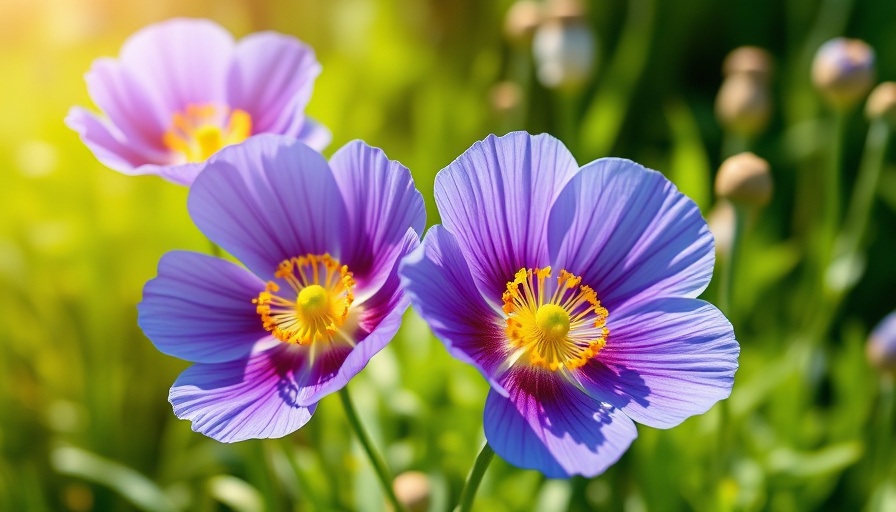
Unlocking the Mystique of Himalayan Blue Poppies
The iconic Himalayan blue poppy, or Meconopsis spp., captivates gardening enthusiasts and casual admirers alike with its enchanting crinkly, sky-blue petals and bold yellow stamens. Its charm is more than superficial; it resonates with cultural significance and historical roots, particularly in the Himalayan regions from which it hails. Cultivating these stunning flowers requires knowledge and patience, but the reward of their splendid blooms is worth the effort.
Understanding the Basics of Himalayan Blue Poppies
Himalayan blue poppies, particularly Meconopsis betonicifolia, thrive in specific conditions found in USDA Hardiness Zones 5 to 7. For successful growth, they require cool summers with protection from the intense heat. Ideal planting environments feature organically-rich loam soil with good drainage, a pH level between 6.5 and 7.0, and dappled shade to keep them cool yet adequately nourished.
Choosing the Right Cultivars for Your Garden
When selecting Himalayan blue poppy cultivars, M. grandis and M. betonicifolia are among the most popular for home gardens. Both varieties can reach heights of 2 to 5 feet and produce stunning blue blooms that vary in shade. With numerous hybrid and cultivated varieties available, it’s important to consider your local climate and soil conditions when making your selection. This focus on suitability can greatly enhance your chances of successful cultivation and vibrant blooms.
Essential Care and Maintenance Tips
Maintaining Himalayan blue poppies involves careful attention to both their environmental needs and potential pests. Gardeners should monitor watering needs consistently, as these plants prefer moist soil but not soggy conditions. Applying mulch not only helps retain soil moisture but also combats weeds that threaten young plants. Keep an eye out for common garden pests, such as aphids and slugs, which can minimize flower production and overall plant health. Employing natural pest control methods can promote a healthy garden ecosystem while protecting your prized poppies.
Propagation: Growing More Blue Poppies
For gardeners looking to expand their collection, propagating blue poppies can be rewarding. These beautiful flowers can be grown from seeds, which require cool stratification before planting. Timing is important; start seeds indoors in late winter, using a lightweight growing medium to encourage healthy root development. Alternatively, consider root division in early spring, carefully separating a mature plant’s roots to encourage growth in new spots of your garden.
A Future with Himalayan Blue Poppies
The allure of Himalayan blue poppies goes beyond their beauty; they symbolize the fragility of their native habitats. The ongoing climatic shifts due to global warming raise concerns about their survival in the wild. For environmentally-conscious gardeners, cultivating these iconic flowers can serve as a reminder of the importance of preserving not just the blooms, but also the ecosystems that sustain them.
Engaging with the Growing Community
Joining local gardening clubs or online forums can be incredibly beneficial for those passionate about Himalayan blue poppies. Sharing experiences, tips, and challenges can provide valuable insights into growing these unique flowers. Plus, connecting with fellow enthusiasts fosters a sense of community and shared purpose, as many gardeners express a desire to contribute positively to the environment.
Conclusion: Cultivate Your Garden Dreams
With the right knowledge and commitment, anyone can succeed in growing the breathtaking Himalayan blue poppies. Embrace the opportunity to cultivate these stunning flowers in your garden, contributing to both your personal oasis and the broader mission of preserving the floral heritage of the Himalayas. Start today by gathering the necessary tools and seeds to embark on a delightful gardening adventure!
 Add Row
Add Row  Add
Add 




Write A Comment